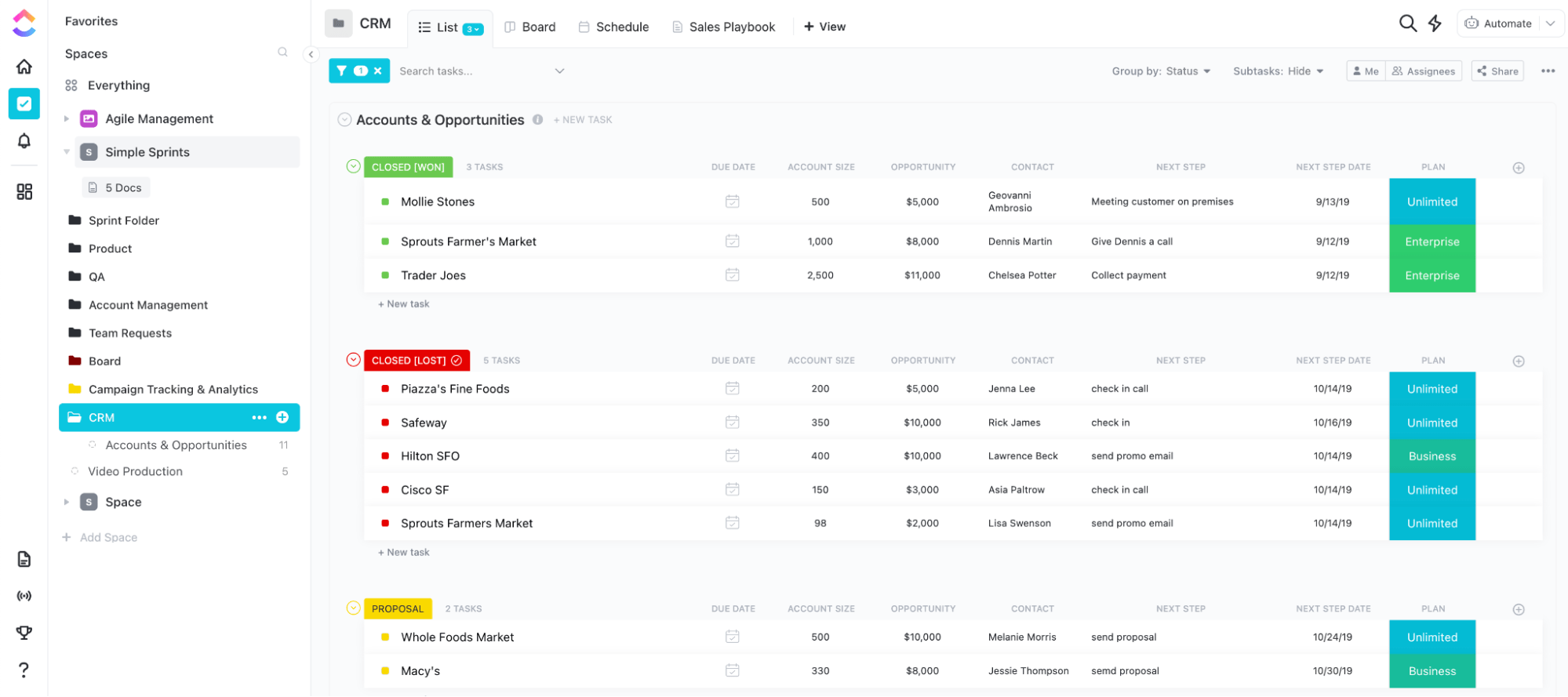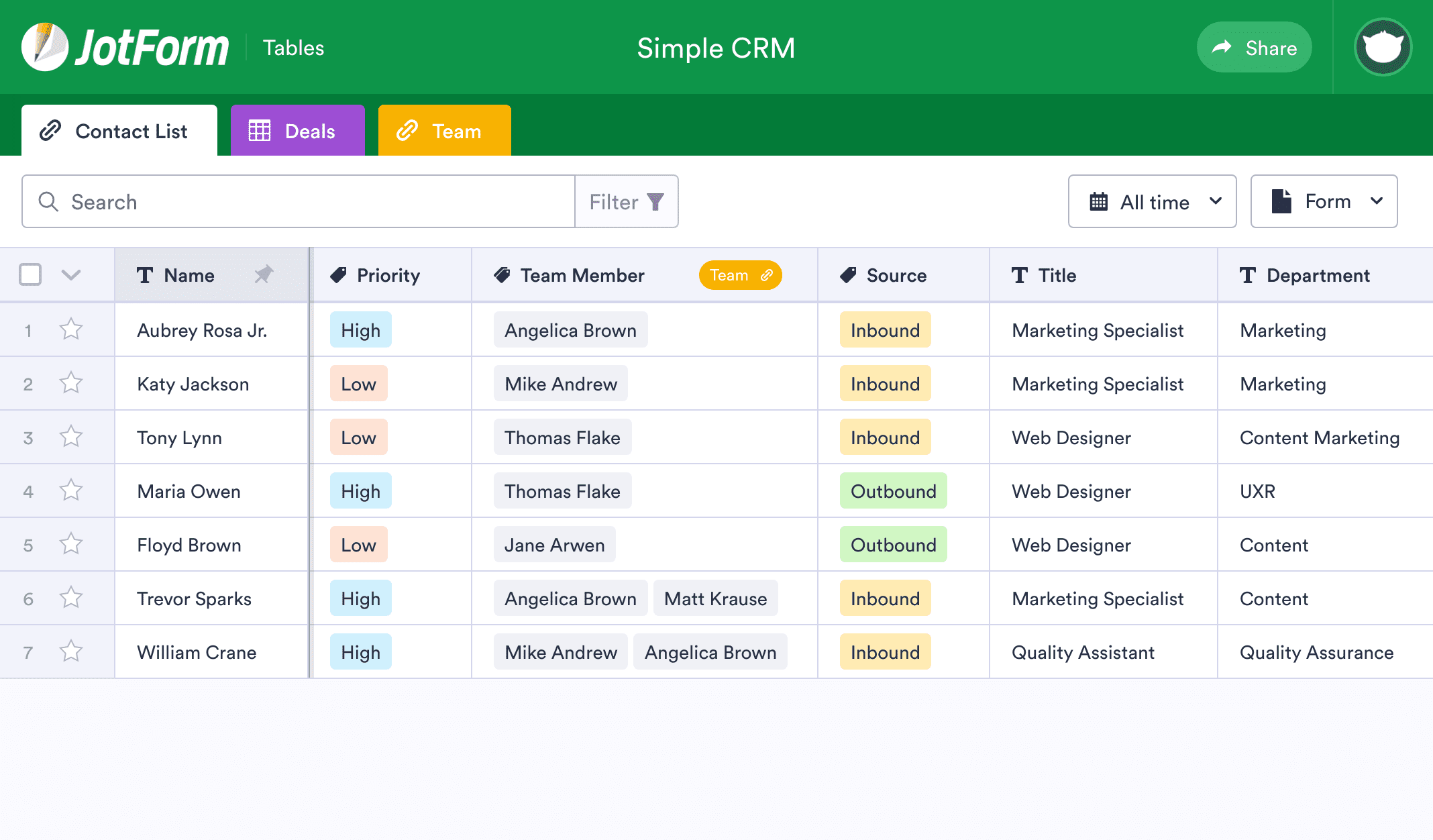In today’s competitive business landscape, implementing a robust customer relationship management (CRM) system is essential for businesses of all sizes. Basic CRM software offers a cost-effective and user-friendly solution to streamline customer interactions, improve sales processes, and gain valuable insights into customer behavior.
This comprehensive guide will delve into the core functionalities, types, benefits, implementation, and integration of basic CRM software, providing you with the knowledge and tools to harness its potential for your business.
Features of Basic CRM Software
Basic CRM software provides businesses with essential tools to manage customer relationships and streamline their sales processes. These systems offer a range of core functionalities that help companies track customer interactions, nurture leads, and close deals more effectively.
Common features included in basic CRM systems include:
- Contact management:Store and organize customer information, including contact details, preferences, and communication history.
- Lead management:Track leads through the sales pipeline, manage lead qualification, and nurture potential customers.
- Opportunity management:Monitor sales opportunities, track progress, and manage quotes and proposals.
- Activity tracking:Record customer interactions, such as phone calls, emails, and meetings, to provide a comprehensive view of customer engagement.
- Reporting and analytics:Generate reports and analyze data to gain insights into customer behavior, sales performance, and campaign effectiveness.
Using basic CRM software offers several benefits for businesses, including:
- Improved customer relationship management:Centralize customer data and interactions, enabling businesses to build stronger relationships and provide personalized experiences.
- Increased sales productivity:Streamline sales processes, automate tasks, and track performance to improve efficiency and close more deals.
- Enhanced data visibility:Provide a comprehensive view of customer interactions and sales data, allowing businesses to make informed decisions and identify opportunities for growth.
Types of Basic CRM Software

Basic CRM software solutions vary in their capabilities and target audience. Here are some common types:
Cloud-Based CRM
Cloud-based CRM software is hosted on remote servers and accessible via the internet. It offers flexibility, scalability, and cost-effectiveness, making it suitable for small businesses and startups.
Examples:Salesforce Essentials, Zoho CRM, Hubspot CRM
On-Premise CRM
On-premise CRM software is installed on a company’s own servers, providing greater control over data security and customization. It is typically preferred by larger organizations with complex CRM needs.
Examples:Microsoft Dynamics 365, SAP Business One, Oracle Siebel CRM
Open-Source CRM
Open-source CRM software is freely available and can be customized to meet specific business requirements. It is suitable for developers and organizations with technical expertise.
Examples:SugarCRM, SuiteCRM, Odoo
Mobile CRM
Mobile CRM software is designed for use on smartphones and tablets, allowing sales teams to access customer data and manage interactions while on the go.
Examples:Salesforce Mobile, Zoho CRM Mobile, Microsoft Dynamics 365 Mobile
Benefits of Basic CRM Software

Basic CRM software offers numerous advantages for businesses, streamlining customer management and sales processes to enhance overall efficiency and effectiveness.
By leveraging basic CRM systems, businesses can:
Improved Customer Management
- Centralize customer data, including contact information, purchase history, and communication logs, providing a comprehensive view of each customer’s relationship with the business.
- Automate tasks such as lead capture, lead qualification, and customer segmentation, freeing up sales teams to focus on building relationships and closing deals.
- Track customer interactions across multiple channels, ensuring consistent and personalized experiences at every touchpoint.
Enhanced Sales Processes
- Create and manage sales pipelines, tracking the progress of leads and opportunities from initial contact to closing.
- Identify and prioritize qualified leads, enabling sales teams to focus their efforts on the most promising prospects.
- Analyze sales data to identify trends, bottlenecks, and areas for improvement, empowering businesses to make informed decisions and optimize their sales strategies.
Success Stories, Basic crm software
- Company A:A small business implemented a basic CRM system and experienced a 25% increase in sales within six months, thanks to improved lead management and customer follow-up.
- Company B:A non-profit organization used a basic CRM to manage donor relationships, resulting in a 15% increase in donations and improved donor retention.
Implementation of Basic CRM Software
Implementing a basic CRM software requires careful planning and execution. By following a step-by-step guide and considering key best practices, organizations can ensure a successful implementation.
The implementation process typically involves several key steps:
| Steps | Timeline | Responsibilities |
|---|---|---|
|
Planning and AssessmentDefine project scope, goals, and requirements. |
1-2 weeks |
Project team, stakeholders |
|
Software SelectionEvaluate and select the appropriate software solution. |
2-4 weeks |
Project team, IT department |
|
Data MigrationImport and cleanse existing customer data into the CRM system. |
1-3 weeks |
Project team, data management team |
|
Configuration and CustomizationConfigure the CRM system to meet specific business needs. |
2-4 weeks |
Project team, IT department |
|
Training and AdoptionTrain users on the new CRM system and ensure adoption. |
1-2 weeks |
Project team, training department |
|
Go-Live and MonitoringLaunch the CRM system and monitor its performance. |
Ongoing |
Project team, IT department, users |
Key Considerations and Best Practices:
-
Involve stakeholders:Engage key users and stakeholders throughout the implementation process to ensure their needs are met.
-
Establish a clear timeline:Set realistic timelines for each implementation step and track progress regularly.
-
Ensure data accuracy:Import clean and accurate customer data to avoid data quality issues.
-
Provide adequate training:Train users thoroughly on the CRM system’s features and functionalities.
-
Monitor and evaluate:Track key performance indicators (KPIs) and make adjustments as needed to optimize the system’s performance.
Integration with Other Software
Integrating basic CRM software with other business applications is crucial for streamlining operations and enhancing efficiency. It allows businesses to connect different aspects of their customer relationship management and leverage data from various sources to gain a comprehensive view of customer interactions.
The benefits of CRM integration include improved data accuracy, reduced manual data entry, enhanced customer service, and better decision-making. However, challenges such as data security concerns, compatibility issues, and the need for technical expertise should be considered.
Common Integrations
- Email Marketing:Integrate with email marketing platforms to automate email campaigns, track customer engagement, and personalize communication.
- Accounting Systems:Connect with accounting software to track customer invoices, payments, and financial transactions, providing a complete picture of customer profitability.
- Help Desk Software:Integrate with help desk systems to manage customer support tickets, track customer interactions, and improve resolution time.
- E-commerce Platforms:Connect with e-commerce websites to track customer orders, manage inventory, and provide personalized shopping experiences.
Pricing and Licensing of Basic CRM Software

Pricing and licensing models for basic CRM software vary depending on the vendor and the features offered. Here are some common pricing models:
Per-user Pricing
This is the most common pricing model for basic CRM software. Vendors charge a monthly or annual fee for each user who accesses the software. This model is simple to understand and manage, but it can become expensive if you have a large number of users.
Tiered Pricing
With tiered pricing, vendors offer different levels of service at different price points. For example, a basic tier might include core CRM features, while a higher tier might include additional features such as marketing automation or customer support. This model allows you to choose the level of service that best fits your needs and budget.
Per-feature Pricing
Some vendors offer per-feature pricing, which allows you to pay for only the features that you need. This can be a cost-effective option if you only need a few basic CRM features.
Comparison of Pricing Plans
The cost of basic CRM software can vary significantly depending on the vendor and the pricing model. Here is a table that compares the pricing of popular basic CRM software solutions:
| Vendor | Pricing Model | Monthly Cost |
|---|---|---|
| Salesforce Essentials | Per-user | $25 per user |
| Zoho CRM | Per-user | $12 per user |
| HubSpot CRM | Free (limited features) | $45 per user |
| Insightly | Per-user | $29 per user |
| Freshsales | Per-user | $12 per user |
When choosing a pricing plan, it is important to consider your needs and budget. If you only need a few basic CRM features, then a per-feature pricing plan may be a good option. If you need a more comprehensive CRM solution, then a per-user or tiered pricing plan may be a better choice.
Final Wrap-Up
In conclusion, basic CRM software empowers businesses with the tools they need to nurture customer relationships, optimize sales processes, and make informed decisions. By carefully considering the features, types, and implementation strategies Artikeld in this guide, you can select and deploy a basic CRM solution that aligns with your specific business needs and sets you on the path to success.
Commonly Asked Questions
What are the key benefits of using basic CRM software?
Basic CRM software offers numerous benefits, including improved customer management, streamlined sales processes, enhanced collaboration, and increased efficiency.
What are the different types of basic CRM software available?
Basic CRM software comes in various types, such as cloud-based, on-premise, open-source, and industry-specific solutions, each with unique features and target audiences.
How much does basic CRM software typically cost?
The cost of basic CRM software varies depending on the features, licensing options, and deployment method. However, many affordable and scalable solutions are available for businesses of all sizes.